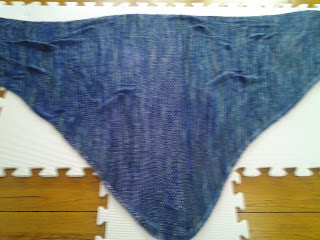Now I pull the top back so the all I have in front of me are the backing and the batting. I turn on my horizontal lock and make a stitching line across the top of the batting/backing. This line is a reference line for me to line up the quilt top.
Once that is down I then place to quilt top back into place with a little slack. This allows me to shift the top around as I need to get it lined up correctly. All this may seem like a lot of work and it is but it set the tone for the rest of the quilting. Getting the quilt sandwich all lined up and straight helps to keep the entire quilt on square.
Now the top/batting/backing are all connected. This is called a quilt sandwich.
Now I am ready to begin quilting! Finally. I gather up everything I need while I am quilting and place that all in one spot. I have a scrap of batting that I use to hold thread that I have cut off...keeps it in one place and easy to stay tidy. I also have a pair of scissors, a seam ripper (whom I call Jack...Jack the ripper.), and a pair of tweezers for when I need to grasp a hold of a small thread.
Also I have a straight edge to aid in stitching on the diagonal.
Because I will be using a straight edge tool I add a large base to the bottom of my machine to give me a wider base.
Apparently I was drunk when I stitched this line.
I haven't decided what I will quilt next. I have clear transparency film that I draw on to use to audition several ideas.





















































